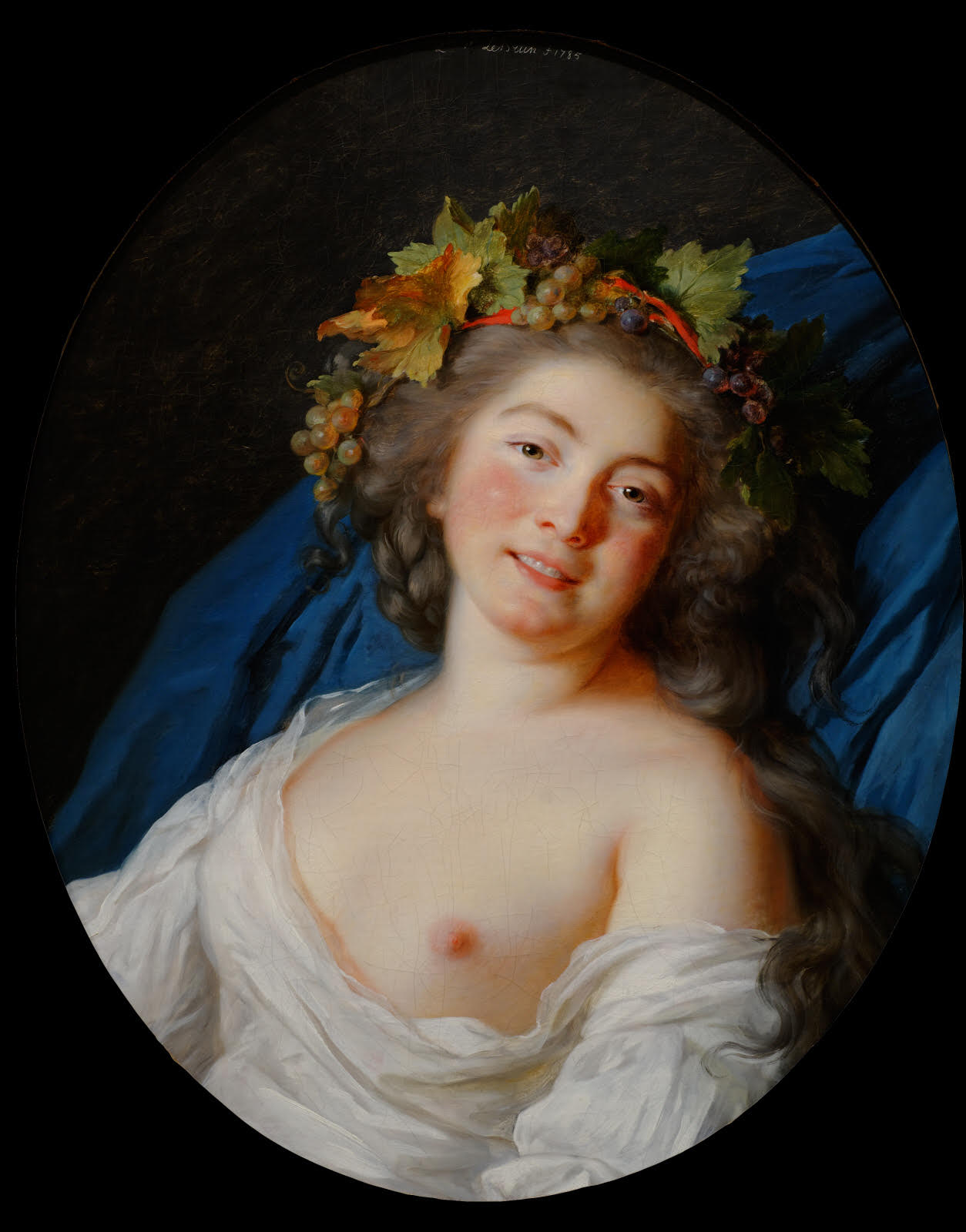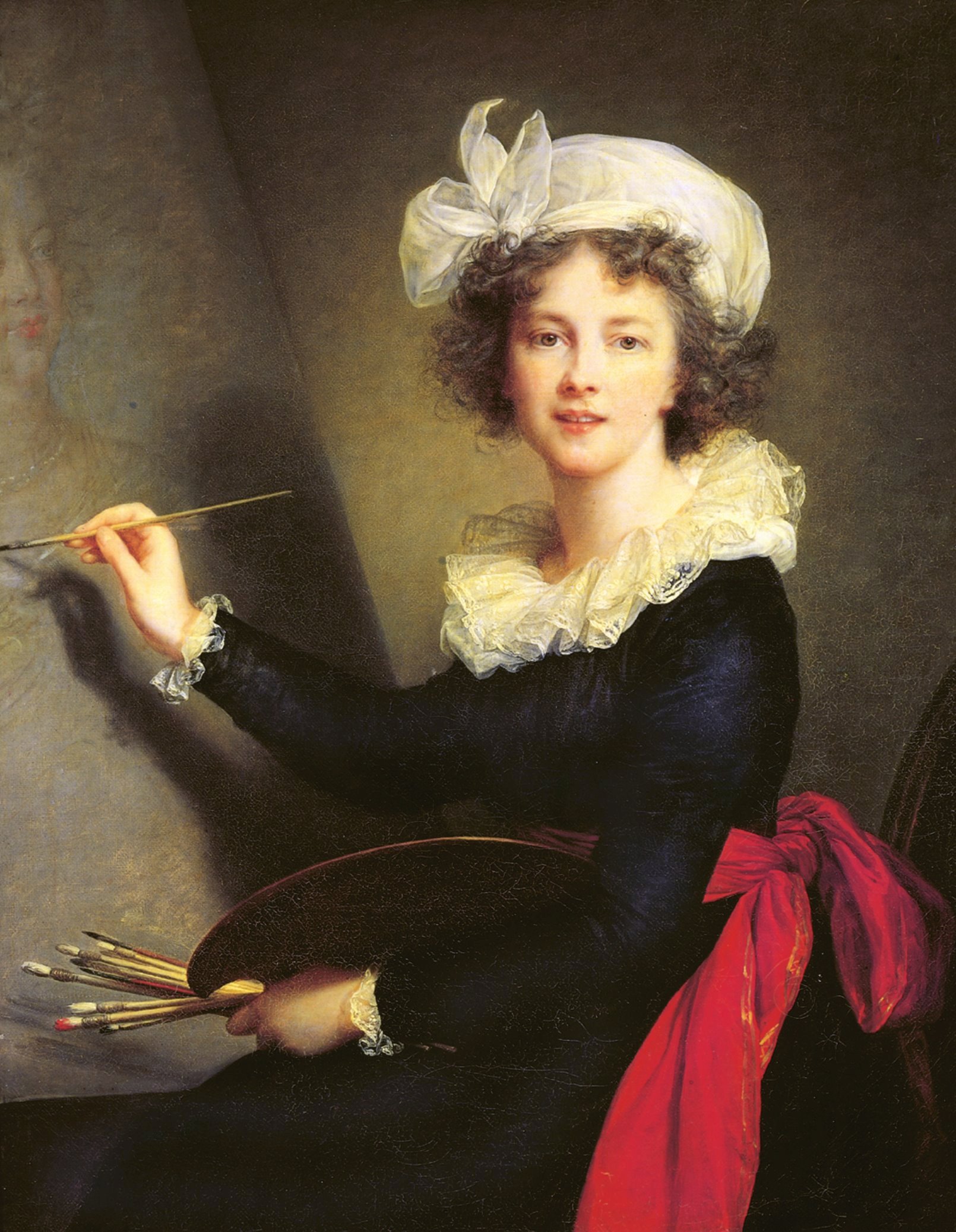We present today's painting thanks to The Clark. :) Of course, we continue our celebration of Women's History Month!
Élisabeth Louise Vigée-Lebrun was highly sought after as a portraitist by European aristocrats in the late 1700s and early 1800s. Although this painting is entitled Bacchante, it may be a portrait in disguise. It was not uncommon in this period for fashionable ladies to have their portraits painted in the guise of mythological characters such as sibyls, muses, or followers of Bacchus, the God of wine.
The bacchante in this painting has been associated with the celebrated beauty Emma Hamilton, mistress of the English naval hero Horatio Nelson. Lady Hamilton was painted as a number of different characters by the English artist George Romney and by Vigée-Lebrun, although it seems that Vigée-Lebrun did not actually meet Lady Hamilton until five years after this work was painted. As a result, other sitters have also been proposed, including the French actress Mme Molé Reymond. This painting does bear a strong resemblance to other portraits of the actress by Vigée-Lebrun, produced later in the 1780s. But perhaps this painting is not a portrait after all. Representations of mythological or pseudo-mythological figures—some of them highly erotic—were common in 18th century France.
Vigée-Lebrun was encouraged early in her career by the painter Joseph Vernet, and by the age of 21, she had received her first royal commission. The portraits Vigée-Lebrun painted before the French Revolution, especially those of women, suggest the refined informality of French aristocratic life. A favorite of Marie Antoinette, she left France shortly after the outbreak of the Revolution and moved, for 12 years, from one European city to another—Turin, Prague, St. Petersburg, Berlin, amd London—before finally returning to France in 1805.
P.S. See more of Élisabeth Vigée-Lebrun and the women in her portraits here!


 Élisabeth Vigee Le Brun
Élisabeth Vigee Le Brun